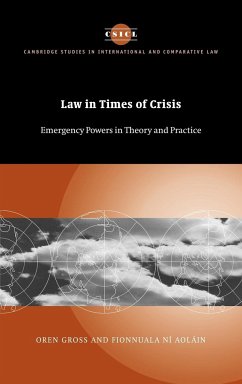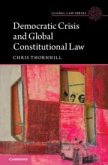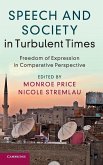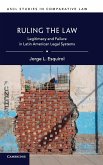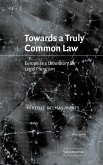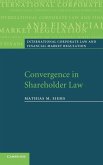Presents the first systematic and comprehensive attempt by legal scholars to conceptualize the theory of emergency powers.
The terrorist attacks of September 11, 2001, and the ensuing 'war on terror' have focused attention on issues that have previously lurked in a dark corner at the edge of the legal universe. This book presents the first systematic and comprehensive attempt by legal scholars to conceptualize the theory of emergency powers, combining post-September 11 developments with more general theoretical, historical and comparative perspectives. The authors examine the interface between law and violent crises through history and across jurisdictions, bringing together insights gleaned from the Roman republic and Jewish law through to the initial responses to the July 2005 attacks in London. Three unique models of emergency powers are used to offer a novel conceptualization of emergency regimes, giving a coherent insight into law's interface with and regulation of crisis and a distinctive means to evaluate the legal options open to states for dealing with crises.
Table of contents:
Introduction; Part A: Models of accommodation; Law for all seasons; Models of extra-legality; Five degrees of separation; Part B: International human rights and emergencies; Emergencies and humanitarian law; Terrorism, emergencies and international responses to contemporary threats.
Hinweis: Dieser Artikel kann nur an eine deutsche Lieferadresse ausgeliefert werden.
The terrorist attacks of September 11, 2001, and the ensuing 'war on terror' have focused attention on issues that have previously lurked in a dark corner at the edge of the legal universe. This book presents the first systematic and comprehensive attempt by legal scholars to conceptualize the theory of emergency powers, combining post-September 11 developments with more general theoretical, historical and comparative perspectives. The authors examine the interface between law and violent crises through history and across jurisdictions, bringing together insights gleaned from the Roman republic and Jewish law through to the initial responses to the July 2005 attacks in London. Three unique models of emergency powers are used to offer a novel conceptualization of emergency regimes, giving a coherent insight into law's interface with and regulation of crisis and a distinctive means to evaluate the legal options open to states for dealing with crises.
Table of contents:
Introduction; Part A: Models of accommodation; Law for all seasons; Models of extra-legality; Five degrees of separation; Part B: International human rights and emergencies; Emergencies and humanitarian law; Terrorism, emergencies and international responses to contemporary threats.
Hinweis: Dieser Artikel kann nur an eine deutsche Lieferadresse ausgeliefert werden.

